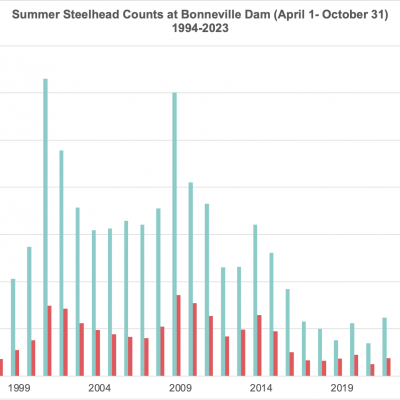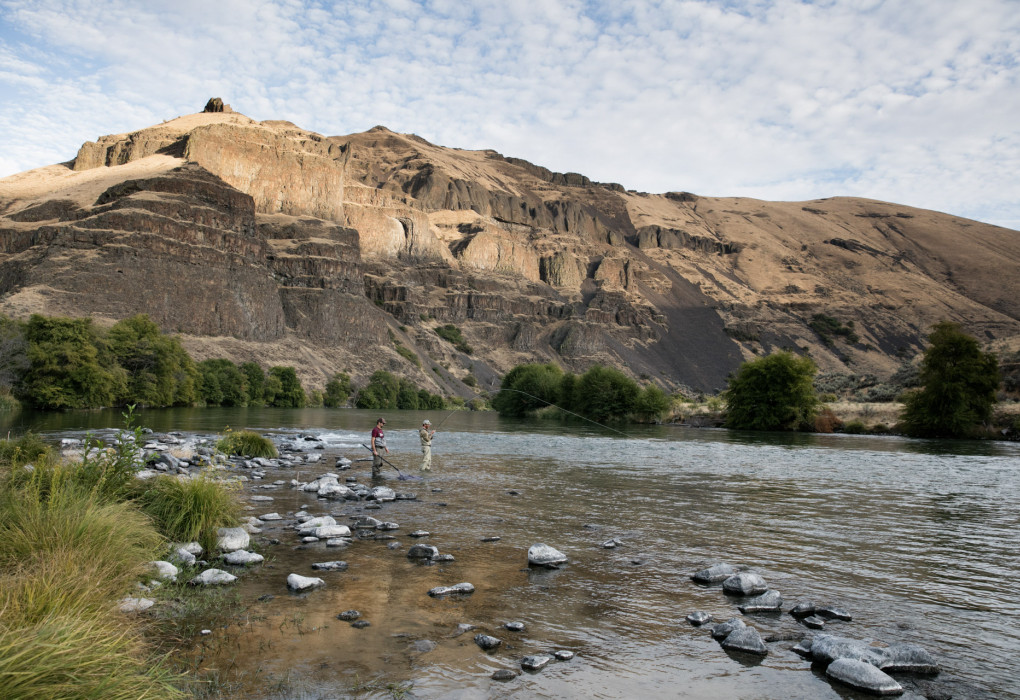Outlook for Deschutes & John Day Summer Steelhead
On April 18, the Oregon Department of Fish and Wildlife (ODFW) hosted a webinar (watch the recording here) to inform the angling public of the outlook for this year's run of Columbia basin summer steelhead. Unfortunately, it's not looking great. The pre-season forecast is for yet another poor return, with an estimate of approximately 68,000 total summer steelhead returning and only 18,600 total wild A- and B-run fish. That would make this year's run the new record lowest, less than even the miserably small run of 2021. So what does that mean for summer steelhead fishing on the Deschutes and John Day this year? And more importantly, what does it mean for the future of summer steelhead in the mid-Columbia River?
Angling forecast for the Deschutes and John Day
According to the Deschutes Steelhead Fishery Framework that ODFW developed last year, the summer steelhead season will start open on the Deschutes because the number of wild adult steelhead passing Sherars Falls was over 625 fish. However, because there is expected to be fewer than 9,900 wild fish over Bonneville between July 1--July 31, the season will likely close on August 15. It is also expected that fewer than 23,100 wild steelhead passing Bonneville between July 1--August 31, so it is unlikely the season will re-open once it's closed.
The John Day fishing framework uses the number of only wild A-index summer steelhead passing Bonneville as a guideline to open the season or not. Under this framework, if fewer than 20,000 wild A-index fish pass Bonneville, the season on the John Day won't open. Given this requirement and the poor outlook, it is unlikely there will be any summer steelhead season on the John Day this year.
Acting as responsible stewards
Currently, the state of summer steelhead in the mid-Columbia River is looking dire. Returns have been down since 2016 (see graph below). We question the wisdom of the current Deschutes framework defaulting to an open season if the previous year's run was high enough. Last year's run was just large enough to allow angling, but was by no means the "return" to abundance as some advertised. ODFW's argument is that few anglers tend to target steelhead early in the season, so they expect the effects of having a season that starts open to be minimal. But if anglers know that it is highly likely the season will close on August 15, isn't it possible that some may change their habits to take advantage of the time it is open? In addition, the highest temperatures in the Deschutes are typically in June, July, and August. During those months, the max temperatures at Moody often surpass 68F, a point when mortality from catch and release angling greatly increases for steelhead.
Hopefully, the forecast will turn out to be low and we'll see decent numbers of summer steelhead returning to the Deschutes and John Day this year. But until we have a better idea of what the run is going to look like, we hope that anglers will refrain from targeting steelhead, even if the season is open. And if the run is better than expected, we urge anglers to pay attention to water temperature, and not fish when it's over 68F.
Looking to the future
So how do we move forward from where we are now to a place of greater abundance? The first thing we need to do is look at what is driving the current dismal returns. Given the patterns of steelhead declines throughout their range, and understanding where they move in the ocean, it is highly likely that climate change, primarily through increasing ocean temperatures, is the biggest factor driving declines. Anyone who is serious about protecting steelhead has to be pushing for major action to be taken on climate change. Contact your representatives and tell them this is a major issue for you. Reduce the flights you take. Here are other steps you can take to reduce your personal carbon footprint.
There are some steps we can take to offset the effects of climate change in freshwater ecosystems. Summer steelhead in basins with relatively intact, high quality habitat are still doing fairly well. We are partnering with Trout Unlimited in the lower Deschutes to locate restoration sites in the mainstem and key tributaries that are likely to provide the greatest return on investment to increase steelhead numbers. The Confederated Tribes of Warm Springs has been carrying out habitat restoration throughout the John Day basin, but we also need to push for increased environmental flows. Extreme low flows in late summer have unfortunately come to characterize the John Day and are a likely driver behind the "overshoot"--the tendency of John Day steelhead to keep swimming upstream past the McNary Dam--that reduces the number of steelhead surviving to spawn in the John Day.
We wish the news for Columbia River summer steelhead was better, but we're committed to work hard with our supporters and our partners to bring these amazing fish back to sustainable numbers.

